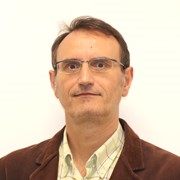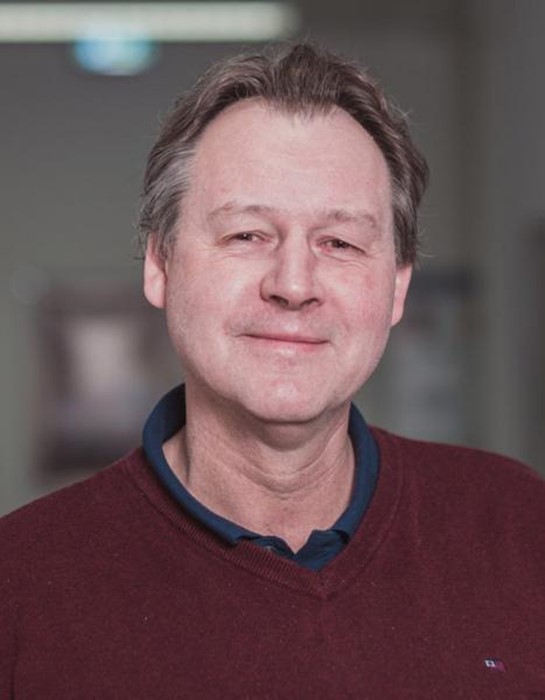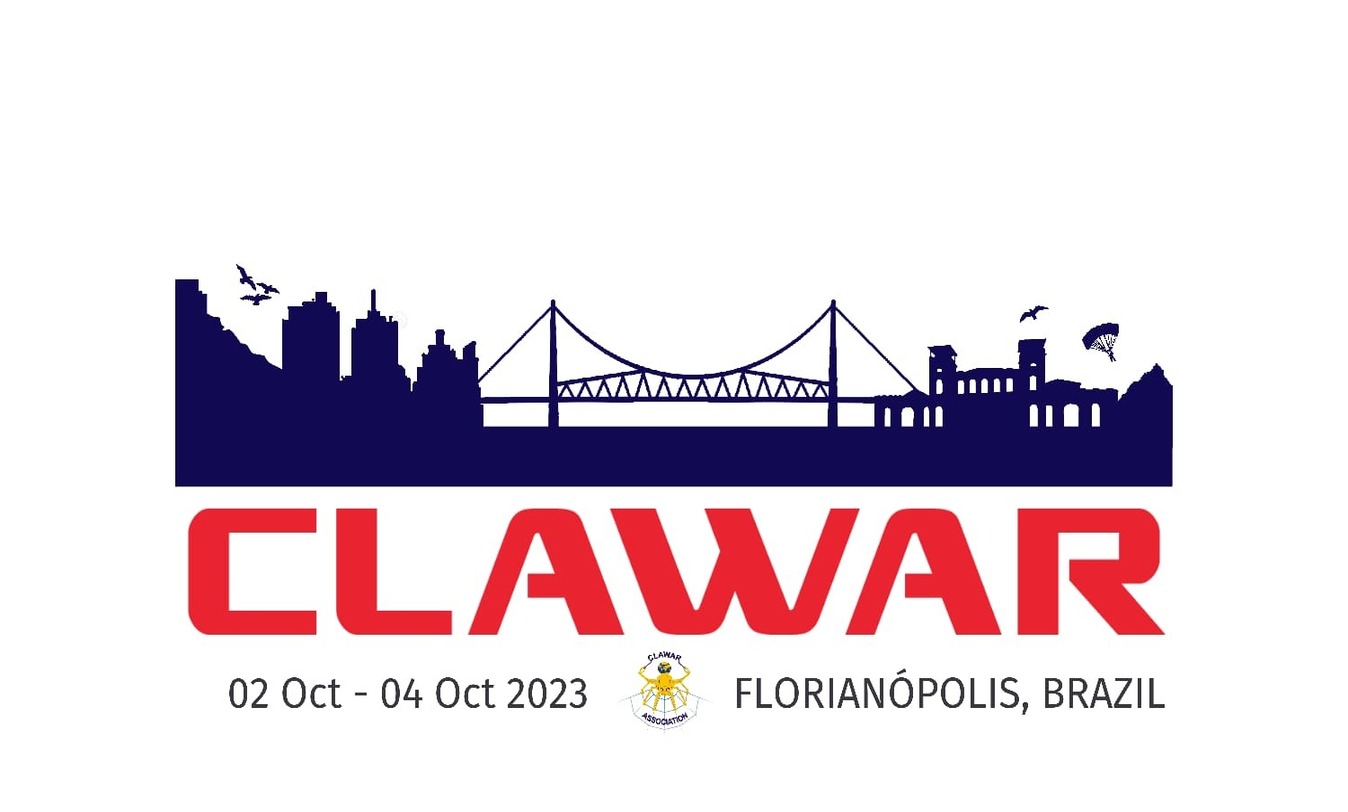Arturo Forner-Cordero
Biped walking with robots and exoskeletons: marching towards bionic gait
Biped exoskeletons with an appropriate control can assist the wearer to walk properly. Nevertheless, it is unclear how to define the best controller to interact with the humans. Many control models or robots are based on central pattern generators (CPG), either symmetrical or, as proposed more recently, asymmetrical. Another problem is the stability of bipedal gait, a problem easily solved by humans that can be difficult for biped robots. While it is not possible to determine how biological biped systems guarantee stability, robot solutions can be useful to propose new hypotheses for biology. In this context, the interaction between human and exoskeletons is very important for assistive or functional recovery exoskeletons and can bring new ideas about the control of human gait.

Bio: Arturo Forner-Cordero is currently Associate Professor in the Mechatronics Department of the Universidade de São Paulo (USP), which he joined in 2010, and formed the Biomechatronics Lab. His current research focuses on the neural mechanisms controlling of human movement and the applications of these control mechanisms on biomimetic robotic design, including bipeds and exoskeletons. He also works on the effects of sleep deprivation on motor control and the ethical implications in robotic design. This research has resulted in more than 100 academic contributions (journal and conference papers) and books as well as patents, standards and measuring devices.
Artuno completed his Engineering degree at the Universidad Politécnica de Valencia (Spain). In 2003, he obtained his PhD degree at the Universiteit Twente (The Netherlands) and, after some Post-doc years in the Katholieke Universiteit Leuven (Belgium) and Consejo Superior de Investigaciones Científicas (CSIC, Spain) joined the USP in Brazil.
Over the last years has chaired the 5th BioRob201) in São Paulo (Brazil) and the EMBS Technical Committee of Biorobotics. He is also Associate Editor of the IEEE Transactions on Medical Robotics and Bionics and of the IEEE Journal of Translational Engineering in Health and Medicine.
https://orcid.org/0000-0002-0352-1640
Paulo Flores
Multibody Dynamics with Contact-Impact Events: Roots, Models and Applications
Multibody dynamics deals with the study of mechanical systems composed of multiple bodies, whose motion interactions are governed by the presence of kinematic constraints and by the application of external forces. The prediction of the dynamic behavior of multibody systems typically involves the formulation of the governing equations of motion and the numerical evaluation of their kinematic and dynamic characteristics. Thus, this talk focuses on the application of multibody dynamics methodologies in the fields of mechanical and biomedical engineering. For that purpose, the main ingredients related to the formulations of multibody systems with contact-impact events is presented. In the sequel of this process, special attention is given to the regularized or continuous models to treat frictional contacts. Moreover, relevant numerical ingredients associated with contact-impact phenomena in multibody dynamics are examined with the intent to discuss the computational accuracy and efficiency. Finally, results for some multibody systems in the context of mechanical and biomedical engineering are utilized to discuss the potential of applications of the multibody dynamics tool in these two emerging scientific areas.

Bio: Paulo Flores is Full Professor at the University of Minho (2013). He received his BS in Mechanical Engineering from UMinho (1997). He holds a PhD in Mechanical Engineering from the UMinho (2005), in collaboration with University of Lisbon (PT) and Wichita State University (USA). Paulo Flores concluded Post-Doctoral studies at the ETH-Zurich (2009). He was visiting Professor at The University of Arizona (2012). Paulo Flores’ interests include Multibody Dynamics, Contact-Impact Mechanics, Tribology, Computer-Aided Design, Mechanisms. Paulo Flores chaired the Technical Committee for Multibody Dynamics of IFToMM – International Federation for the Promotion of Mechanism and Machine Science (2014-2019). He is editor-in-chief of the Mechanism and Machine Theory journal.
Prof. Dr. Karsten Berns
Human-like Bipedal Locomotion
Bipedal locomotion is still an open area of research. Despite the great progress in recent years, the locomotion capabilities and energy consumption of a human-sized biped are still not comparable to human walking and running. Due to the drawbacks of conventional control approaches, as well as the challenging design of mechatronics, researchers have studied the biological and biomechanical aspects of human locomotion. From these, valuable insights can be derived for human-like bipedal locomotion. Among them is Bio-Inspired Behavior-Based Bipedal Locomotion Control (B4LC), developed by the Robotics Research Lab (RRLab) at the University of Kaiserslautern. The concept attempts to transfer the human locomotion-derived principle of combining a fixed number of synergies and reflexes for different walking phases. Another focus of the presentation is the mechanical design of a serial elastic actuator, which has similar characteristics to a human muscle. Comparable to a human leg, the mechanical concept of the RRLab biped includes mono- and biarticular muscle-like actuation. The advantages of the biarticular muscle concept for bipedal locomotion and how the concept can be implemented are discussed. Experiments in simulation as well as on a planar biped are used to demonstrate the performance of human-like bipedal locomotion.

Bio: Prof. Dr. Karsten Berns studied computer science with a focus on artificial intelligence at the University of Kaiserslautern (1982 to 1988) and received his PhD from the University of Karlsruhe (now KIT) in 1994. He has been a full professor at the University of Kaiserslautern since 2003. His current research area is the realization of reliable, complex autonomous robotic systems. The main application area is off-road robotics, where autonomous or semi-autonomous vehicles such as small trucks, excavators, harvesters, tractors and rescue robots are developed. In addition, Prof. Berns focuses on research on humanoid robots. Main interests are bipedal locomotion and human-robot interaction.





